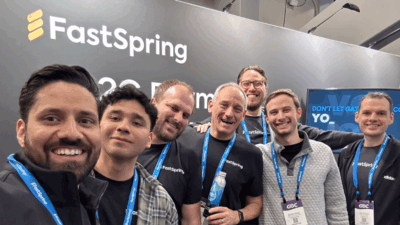As we head towards the end of this unprecedented year, it seems the 2020 holiday season is met with even more anticipation than usual. Getting your digital business ready for the holidays is a lot like getting you and your home prepared for the holidays. Think about it; you probably have started thinking about holiday shopping lists and cards back in September or October, and you’ll start putting up decorations at the end of November and into December. That lines up nicely with when you need to start planning, prepping, and executing your holiday campaigns. And while this holiday season looks very different than ever before, there’s still plenty of ways to get into the holiday spirit and set your site up for success.
There’s nothing better than a well-planned holiday season, whether that means finishing your shopping before Black Friday or executing a flawless holiday campaign—complete with Black Friday, Cyber Monday, Thanksgiving, Christmas, and New Year’s sales—all wrapped up in a neat bow. And we know all too well what happens when we don’t plan ahead—last-minute gifts and virtual holiday cards that equate to half-baked campaigns and lost sales. So let’s help keep each other on track—both at home and in our business—for a great holiday season with this simple holiday checklist.
1. Prep your holiday shopping lists | Create a marketing plan
Before you send out cards, you need to get family pictures taken, update your mailing list, find the right look for your holiday cards, and set a send date. For your shopping list, you need to make a list of people to buy for, think of the perfect gift for each person, and get everything wrapped in time for the holidays. Doesn’t this sound a lot like a marketing plan? You have to find the right target audience, craft your messaging, design new creative, set goals, and create a promotional calendar.
When creating your marketing plan, you need to decide what holidays matter most to your business. You may choose to hit each holiday—Thanksgiving, Black Friday, Small Business Saturday, Cyber Monday, Christmas, New Year’s—with a different promotion or choose one or two holidays that have been the most profitable in the past. Once you’ve decided what holidays to include in your holiday marketing campaigns, here’s what you need to complete your marketing plan:
- Set your goals. Marketing goals usually include increasing sales X percent or reaching 4th quarter projections during this time of year. But you may want your marketing to also increase customer loyalty, brand recognition, and repeat sales. Regardless of your goals, set them early to keep your team focused.
- Choose your marketing tactics. Determine what marketing channels have been the most effective for your business in the past. Have you seen positive responses from paid ads? Do your social posts get a lot of clicks? Or do you see the most sales from your email list? Depending on your budget, you may choose to focus on one tactic or use a combination of paid search, social, content marketing, and email.
- Create a promotional calendar. This should include all blog posts, social posts, email blasts, paid search ads, and any other on-site advertising (banners, pop-ups, etc.). Pro tip: the best time to start social advertising is three weeks before Thanksgiving.
- Develop your festive creative. Get your design and copy teams together and start putting together all the necessary creative pieces. Make sure your creative team understands your marketing objectives so they can help you reach specific goals.
2. Decorate your home | Deck your website for the holidays
There’s nothing like a trimmed tree, beautiful lights, and stocking next to the fire to get you in the holiday spirit. And your house isn’t the only thing that should reflect the season—your website should too. But your website prep should go beyond aesthetics; it also needs to be equipped for the added holiday traffic and sales.
When businesses think about the holidays, they usually think about increased sales, fulfillment logistics, and additional staffing needs. But don’t forget about your website’s backend! There’s nothing worse than a crashed server during the busiest time of the year.
In general, ecommerce sites can expect to see up to three times more traffic than usual on Black Friday and Cyber Monday. If you plan to hold promotions from Thanksgiving through the new year, you can expect an uptick in traffic throughout that time frame, so be prepared. Have extra servers ready, and consider doing the following:
- Perform a website audit. This will help you locate broken links, 404 errors, and web accessibility issues. It’s also a good idea to do a full SEO audit to analyze everything related to your website’s search visibility level.
- Focus on your content marketing. Create a content calendar that includes regular blog posts on relevant and interesting topics. Start posting holiday-specific posts in November and increase post frequency throughout December. And don’t forget to guest post on other credible sites to increase inbound traffic.
- Build holiday-themed landing pages. Get festive and create holiday-specific landing pages. Use holiday imagery, customized check-out buttons, and other seasonal design elements.
- Create an optimized checkout process. Make sure the conversion process on your site is glitch-free. Consider using conversion specialists to help eliminate any obstacles in the purchase process.
- Anticipate global sales. Make sure your site is capable of accepting global payments and compliant with global and local rules and regulations. For straightforward solutions to global transactions, check out how an all-in-one ecommerce platform simplifies global payments.
3. Tie it all up in a bow | Measure the results
Let’s be serious; the post-holiday season is when you assess the damage and determine what New Year’s resolutions you need to make to get yourself back on track. And that’s what measuring results are all about too.
Once your campaigns are completed, go back and evaluate performance. Did you meet your marketing goals and objectives? Did you find any valuable new insights about your customers, messaging, or marketing channels?
To ensure you get the most reliable data available, have your reporting in place to track all relevant data. Your analytics tools should be able to track all purchases and abandoned sales throughout the entire conversion process and provide channel-specific and ad-specific data. This will help you determine what channels and marketing tactics resulted in the most sales and what messaging was the most effective for your target audiences.
We tend to stress about the holidays. Whether we want to find that perfect present or create a successful campaign, we often overthink the process. But it comes down to taking it a step at a time and dividing major tasks into digestible parts. And for an even more in-depth guide on how to set up your business for the holidays, take a look at our 2020 Holiday Playbook!
![[Customer Story] Why TestDome Considers FastSpring a Real Partner](https://fastspring.com/wp-content/themes/fastspring-bamboo/images/promotional/2023/FastSpring-TestDome-blog-thumbnail.jpg)








